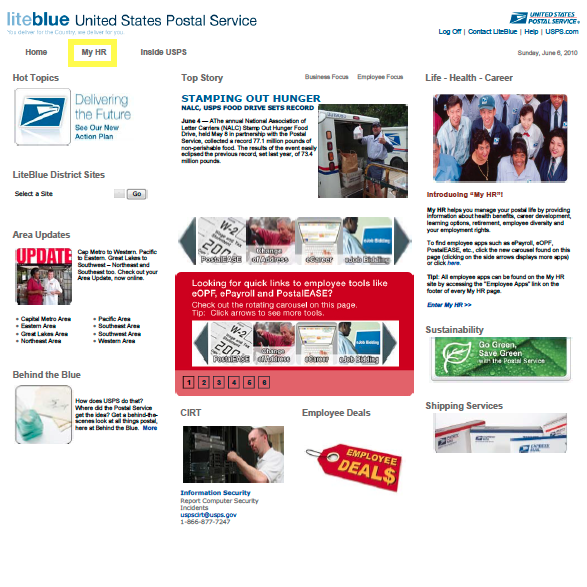CSRS Discount of Retirement Commitments
This article discusses the refund of a federal employee’s contributions to the Civil Service Retirement System (CSRS) when the employee leaves federal service before he or she is able to retire. The discussion includes eligibility for a CSRS refund, the effect of the refund on your CSRS annuity, required notification of a spouse or former spouse, when a refund is subject to redeposit and forms required to be filed to obtain a refund.
Lump Sum Credit
A lump sum credit is the un-refunded amount of the employee’s contributions to the Civil Service Retirement and Disability Fund (the CSRS fund). This lump sum credit consists of:
- Retirement contributions deducted from basic pay, amounting to approximately 7% of an employee’s after-tax wages;
- Deposits and/or redeposits, including deposits for post-1956 military service; and
- Interest payable under law.
The following individuals are eligible for a lump sum credit: (1) a separated employee or an employee who is no longer covered by CSRS or FERS; (2) the beneficiaries of a deceased annuitant or a survivor annuitant if the full amount of retirement contributions had not been paid out in the form of an annuity or survivor annuity at the time of death; and (4) the beneficiaries of a deceased former employee.
When a former employee or an employee is no longer covered by CSRS or FERS, he or she is issued a refund of the accumulated lump sum credit. The refund payment includes payment of any and all: (1) retirement contributions deducted from basic pay, including CSRS Offset contributions for individuals covered under CSRS Offset; (2) deposits and/or redeposits into the system; (3) military service credit deposits; (4) voluntary contributions to CSRS under the voluntary contribution program; and (5) interest payable under the law.
Interest is payable on refunded contributions covering at least one year of CSRS service but fewer than five years of CSRS service. Interest is payable at three percent compounded annually.
The Effect of a Refund on Your Annuity
When a CSRS refund has been properly paid, all annuity rights based on service covered by the refund are void unless the former employee is later reemployed in a position subject to CSRS or FERS deductions. If the reemployment is under FERS, it may be necessary to make a deposit to cover the service before any credit for the service is restored. Because of the impacts that this election has on an employee’s future benefits it is incredibly important that all potential recipients speak with a financial professional who has been trained in Public Sector Retirement benefits prior to making this election.
Service for which the employee received a refund is creditable in determining whether a current employee has service for the required number of years to be eligible for a CSRS annuity. But this service may be used for annuity computation purposes only in the following circumstances:
- If the individual applied for a non-disability annuity beginning after Dec. 1, 1990 and the refunded service ended before Oct. 1, 1990, the refund does not have to be repaid in order for the individual to receive credit for the service. Full credit will be allowed for the length of the refunded service, but the annuity will be actuarially reduced by an amount equal to the reduction for an alternative form of annuity lump sum in the amount of the redeposit.
- If the individual applied for a disability annuity or the refunded service ended after Oct. 1, 1990, then the individual must redeposit the refund plus interest.
- If the individual is eligible to make an alternative annuity election, the redeposit will be deemed paid at the time of retirement.
Refund Subject to Debt Due to U.S. Government
A refund is subject to any properly certified and timely request for recovery of a valid debt due to the U.S. government. The amount of a refund representing an employee’s actual contribution is not subject to federal income taxes. But any interest paid on those contributions is taxable in the year in which the refund is paid.
Eligibility for a Refund
A former employee must meet all of the following requirements to be eligible for a refund:
- he or she must have been separated from federal service for at least 31 consecutive days or transferred to a position in which he or she is not subject to CSRS, CSRS Offset or FERS deductions and remained in that position for at least 31 consecutive days;
- he or she filed an application with OPM for a refund;
- the former employee is not slated to be reemployed in a position subject to CSRS or FERS deductions at the time the application is filed;
- the former employee must not be eligible to receive an annuity within 31 days after filing the application;
- he or she is not prohibited from receiving a refund because of a court order; and
- he or she must comply with requirements for notification of current and former spouses. A current spouse must always be notified, regardless of the length of the marriage on the amount of civilian service the employee has.
Eligibility Criteria in Relation to Current or Former Spouse
The former employee’s application for a refund must be accompanied by form SF 2802B, “Current/Former Spouse Notification of Application for Refund of Retirement Deductions Under the Civil Service Retirement System,” for a current spouse and each qualifying former spouse. This form must be signed by the individual’s current spouse or any former spouse. OPM cannot pay the refund unless the applicant submits this form, supplies the documentation required below, or is authorized a waiver of the notification requirement.
If the employee is unable to secure a current or former spouse’s signature on the application, the employee must submit with the refund application one of the following:
- Notarized statements by two individuals who witnessed the employee notifying or attempting to notify a current or former spouse of the refund application. The notarized statements must attest that the witness stated that the employee personally gave, or tried to give, the notification to the spouse or former spouse.
- A current or former spouse’s mailing address in order that OPM may attempt to notify him or her. If OPM is requested to make the notification, it will cause a six to eight week delay in the payment of the refund. The refund cannot be paid unless OPM receives a return receipt, indicating that the notice was delivered.
Waiver of Spousal Notification
OPM may waive the spousal notification requirement if the employee submits evidence to OPM that his or her current or former spouse’s whereabouts are unknown. Evidence of this may consist of:
- A determination by a court or administrative agency empowered to make a decision that the current or former spouse is missing; or
- A notarized statement from the former employee and two other competent adults, one of whom is not related to the former employee, attesting to the fact that a current or former spouse’s whereabouts are unknown. The statement must detail the steps taken to locate him or her.
If a former employee falsifies information or a signature on form SF 2802B, he or she may be investigated and prosecuted. If the falsification results in a payment to the former employee that should properly have been made to a current or former spouse based on a qualifying court order, the former employee will be subject to civil litigation or administrative action to recover the erroneously paid funds.
Forms Required to Be Filed
To receive a refund, an employee or former employee must file form SF 2802, “Application for Refund of Retirement Deductions” and an SF 2802B, if required. The SF 2802 must be signed in ink in order to be accepted by OPM. OPM will verify that the “original” signature appears on the application. OPM cannot accept a photocopy. The payment address information shown on the SF 2802 must be the correct mailing address for the refund payment. OPM cannot accept an address that has been altered.
If the applicant for a refund has been separated from federal service for 30 days or less, the application must be filed with the agency involved. If the former employee has been separated for more than 30 days, he or she should send the application directly to OPM at the following address:
Office of Personnel Management
Civil Service Retirement System
Retirement Operations Center
Attn: REFUNDS
Boyers, PA 16020
When a Refund is Subject to Redeposit
In some situations, a refund may be redeposited back into the CSRS system. Redeposits are sums of money paid into the retirement fund by an employee or survivor to cover a period of service during which CSRS deductions were withheld but later refunded. (Refunded FERS contributions cannot be redeposited.)
If the service for which deductions were refunded ended before Oct. 1, 1990, the employee does not have to make a redeposit to receive credit for the refunded service. Full credit will be allowed for the length of the refunded service, but the employee’s annuity will be reduced based on age and life expectancy — the younger the employee, the smaller the annual reduction. If the application for the refund was received by the Office of Personnel Management after Sept. 30, 1982, the interest on the refund accrued at 3% annually until Oct. 1, 1985, and then switched to a variable rate each year. If the application for refund was received prior to Oct. 1, 1982, then a 3% percent rate of interest was compounded annually on the unpaid redeposit amount.
If you do not redeposit the refund if required, it can have a negative effect on the amount of your annuity. There are many calculations that can be made as to whether to redeposit the refund. The best thing to do if you have a redeposit issue is to ask your agency’s HR office to compute how much you owe and what the effect would be on your annuity if you do not pay it back.






